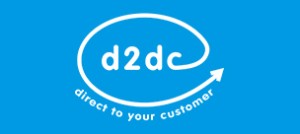Plan your Leaflet
Producing, creating, editing and distributing a leaflet comes with a complicated array of steps. To make sure you’re maximizing the potential of door drop campaigns, take advantage of this checklist.
Goals and Expectations
Before you get started, think about the results you want from your leaflet. Do you want to generate leads, orders, subscriptions, memberships, attendance, donations, website traffic or retail traffic? What are realistic expectations for your engagement level?
Budget
When looking at your budget, separate out your fixed costs from your variable costs. Your creative and project management costs are fixed budget items. These costs remain the same regardless of quantity. However, your variable costs such as printing will change with quantity.
Positioning Strategy
Positioning is about how your product or service fits into the marketplace and how your target audience perceives you as compared to your competitors. Are you the lowest-cost provider with an entry-level product or are you the highest-cost provider for a more refined audience?
Consider your product/service opportunity. What does your product or service do for your target audience? And how will it change the status quo of your audience?
Consider sales process integration. Where does this fit into your sales process? Lead acquisition, lead conversion, customer nurturing? Shape your messaging according to the expectations of your customers as they are guided down the sales funnel.
Audience Targeting
Before you begin distributing leaflets, describe the ideal customer for your business. An audience profile will sketch out a detailed overview of your best prospects. It should include demographic and socio-economic descriptions to narrow your distribution scope.
Offer Creation
The offer is one of the most important element in driving response quantity and quality. Understanding the differences between lead generation and order generation offers is essential to writing an effective offer that will entice your customers. If an offer, like a whitepaper needs to be created, complete that step before distributing.
Response Channels
It’s always best to give your readers multiple ways to respond. You can choose reply mail, email, mobile text, a dedicated landing page, an 800 number, your website or walk-in? Tailor your response variables according to the daily lives of your ideal customer.
Distribution Channels
Choosing a distribution channel will change the way your target market interacts with your leaflets. Solus, Team distribution, newspaper inserts, Royal Mail? Each method comes with different advantages and different costs. Visit our blog for guidance in how to choose the best distribution method for your company’s needs.
Art and Messaging Direction
Creative is the most talked about step in this process because it’s the most visible. But the focus needs to be on the persuasiveness of the message – not just its creativity or cleverness. Moreover, adjustments in the creative should be judged on improvements in response quantity and quality.
Create copy that highlights your unique selling proposition – benefits or reasons why someone would want to buy your product or service. Some are more important, but usually one will stand apart as the reason why your target audience will buy.
Production
Production covers all those services needed to get a leaflet ready for distribution. This includes your data processing, printer and distribution service. If you’re using a landing page or pURL, where will it be hosted and who will collect the data? If you’re using reply mail, have you arranged for a business reply license?
Scheduling
A door drop campaign typically takes 5-10 weeks to get into the hands of your target market. The most time-consuming step is the creative, which can take 2-6 weeks depending on the complexity and the turnaround time for approvals and revisions. Beyond creative, you also need to plan for printing (usually 2-3 weeks) and distribution services (1 week). Naturally, all of these intervals can be shortened depending upon your urgency.
Response Tracking and Evaluation
If you’re only doing one leaflet at time with no tested elements, this is pretty simple. You just count the number of response you get – from all response channels. But what if you have overlapped door drop campaigns or you’re testing different consumer targeting, different offers or creative? Then you need to develop tracking codes to identify the source of each response.
Follow-Up Strategy
Not all door drop campaigns stand alone. Those that produce leads, need to be supported by a follow-up strategy that may include additional contact, email, phone or face-to-face sales calls.
It is important to create an email nurturing program that stays in touch with all new leads – even if the leads are immediately turned over to sales. This can include email “drip” programs and email newsletters.
Response Analysis
The most common analysis is the response rate, but this doesn’t take into account the quality of the lead or the cost of the lead. Choosing to use analyzing programs on a cost-per-lead or cost-per-qualified-lead basis will give you more information to better your future campaigns.
Based on the response, this is also a time to make adjustments to your door drop campaign strategy. If you need more leads, you can adjust your offer to make it appealing to more people. If lead quality was a problem, you can add some qualifying questions to your offer to improve lead quality. If the cost per response is an issue, you may want to look at a new distribution channel.
Effective leafleting campaigns require a lot of balancing to obtain a favorable return on investment in the time you want. For more information on the intricacies of door drop campaign planning, please contact one of our creative campaign strategists.
